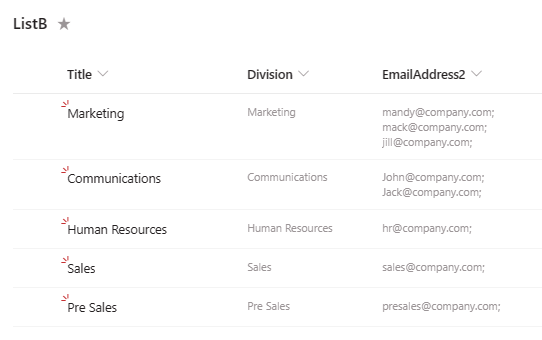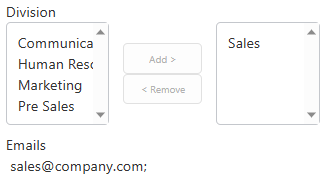Hi @isabellamai
Form Route
Depending on the number of division in List B,
You can retrieve the the Email addresses from List B from the Form using the Lookup function either through a Calculated Field control or a Form variable.
e.g. lookup(“listB”, “Division”, “marketing”, “Email_Address”)
→ Query List B, search column Division for the value “marketing” and return the value from the “Email_Address” field which is “mandy@company.com; mack@company.com; jill@company.com”
https://help.nintex.com/en-US/nintex2019/current/sp2019/Forms/Designer/LookupFunction.htm
Then concatenate all lookup results into a final string. Use semicolons the separator.
PS: Which form designer?
Workflow Route
Create a loop to retrieve the values of the selected division.
Use the Query List action to query List B, Division column for the value of the Loop
Append the resulting string into a Text variable. Use semicolons the separator.
My preference is the Form Route. Its faster to build and a lot quicker to test.
If done correctly, you shall see text/calculated field with all the emails.







